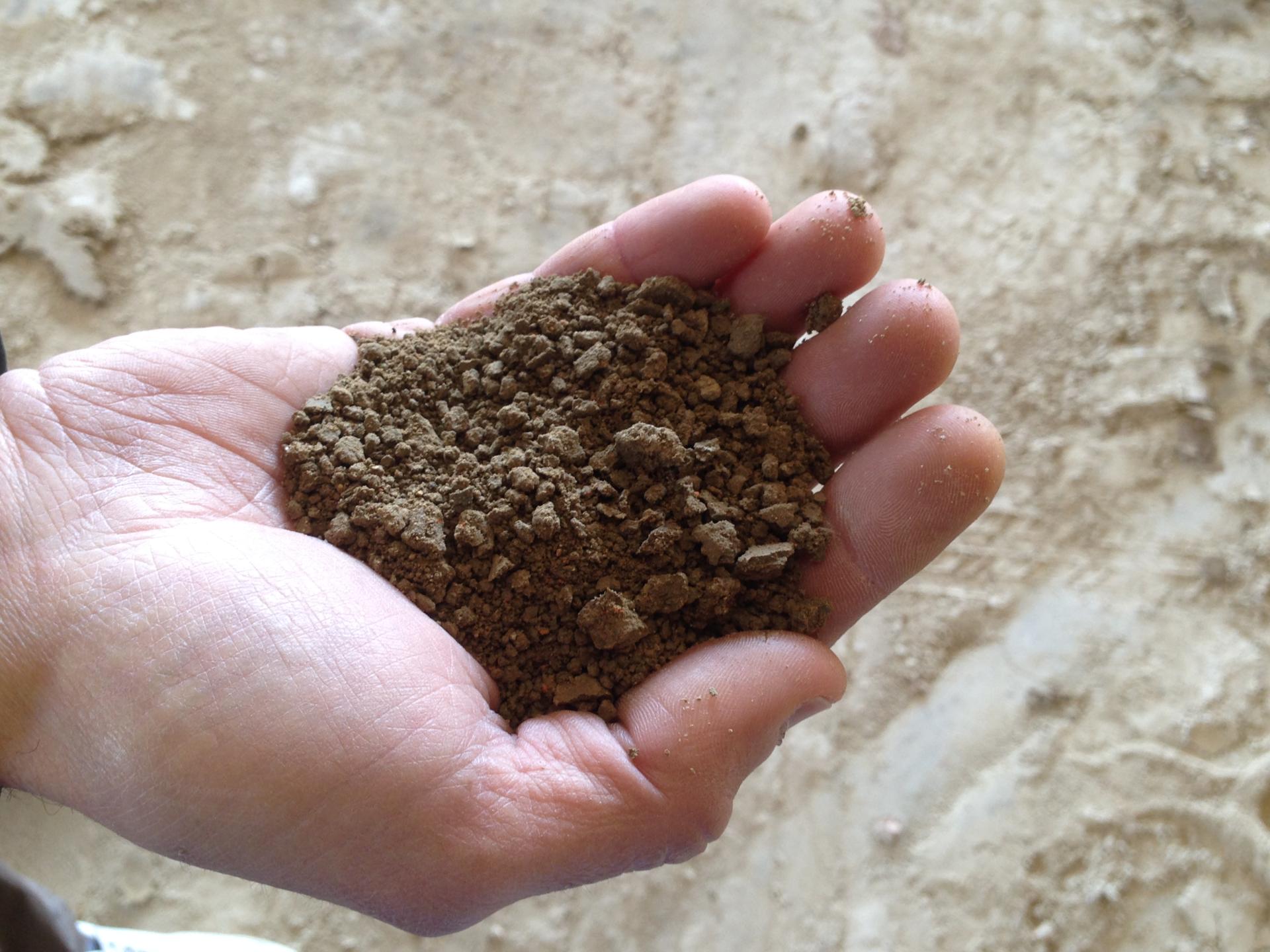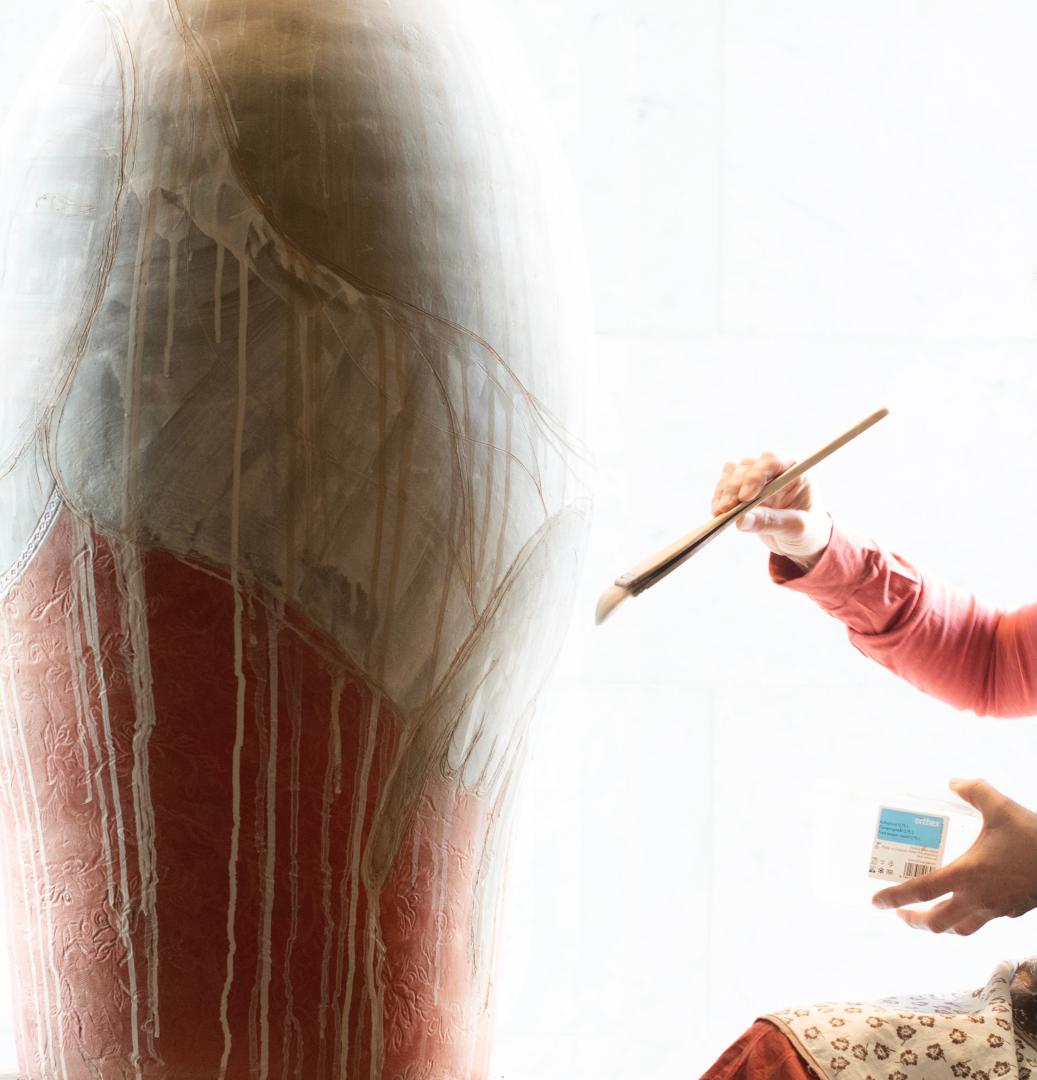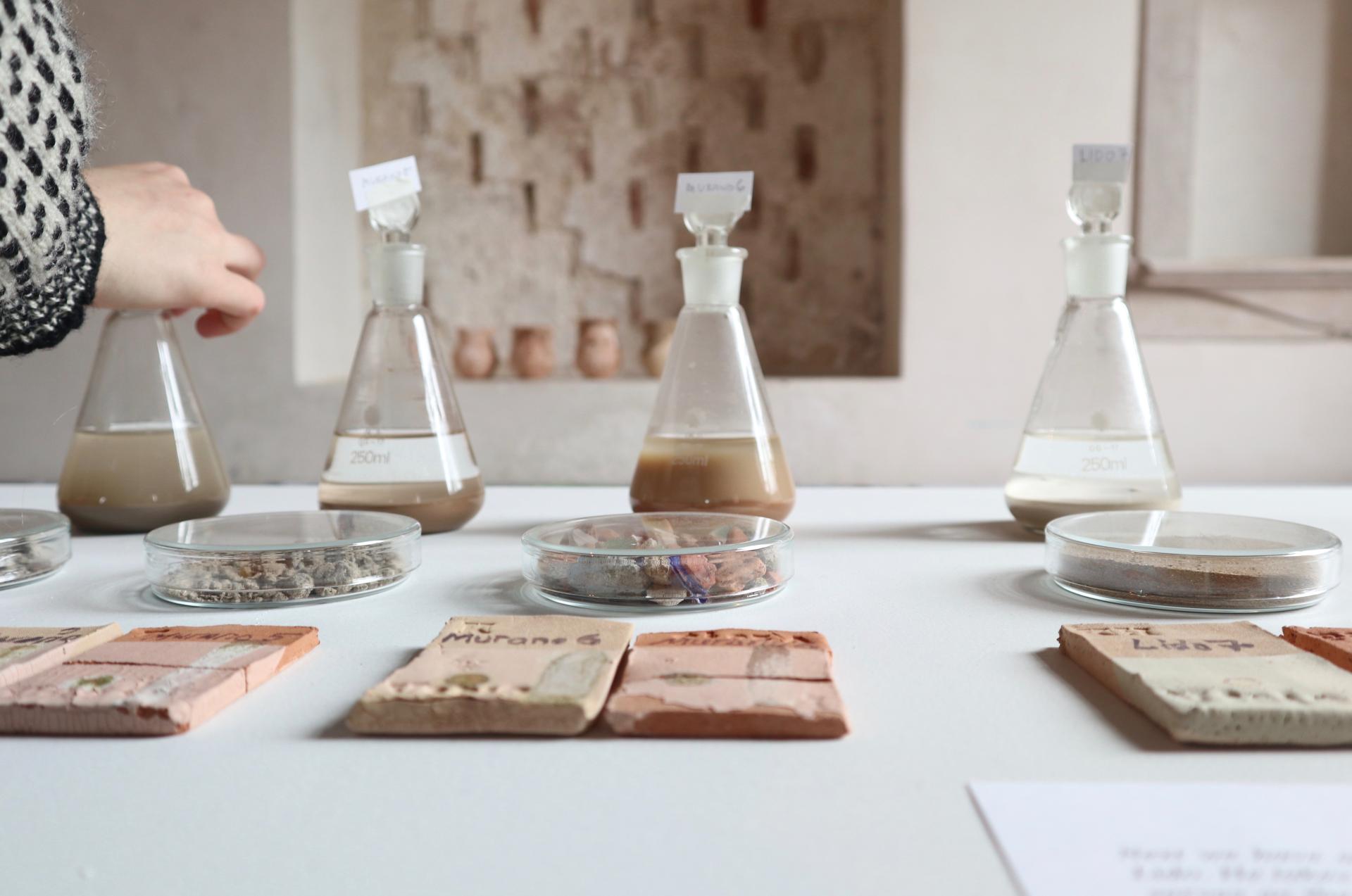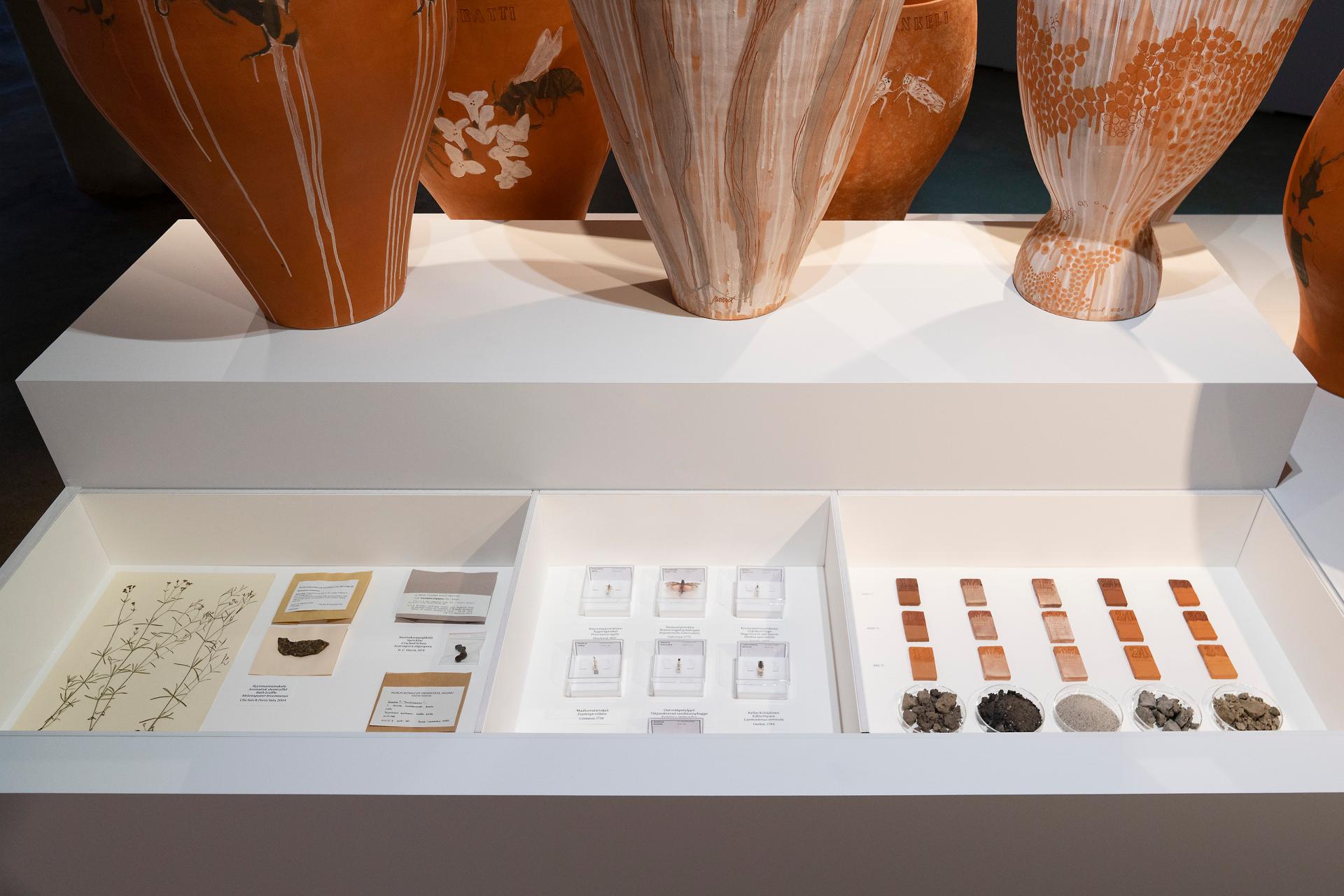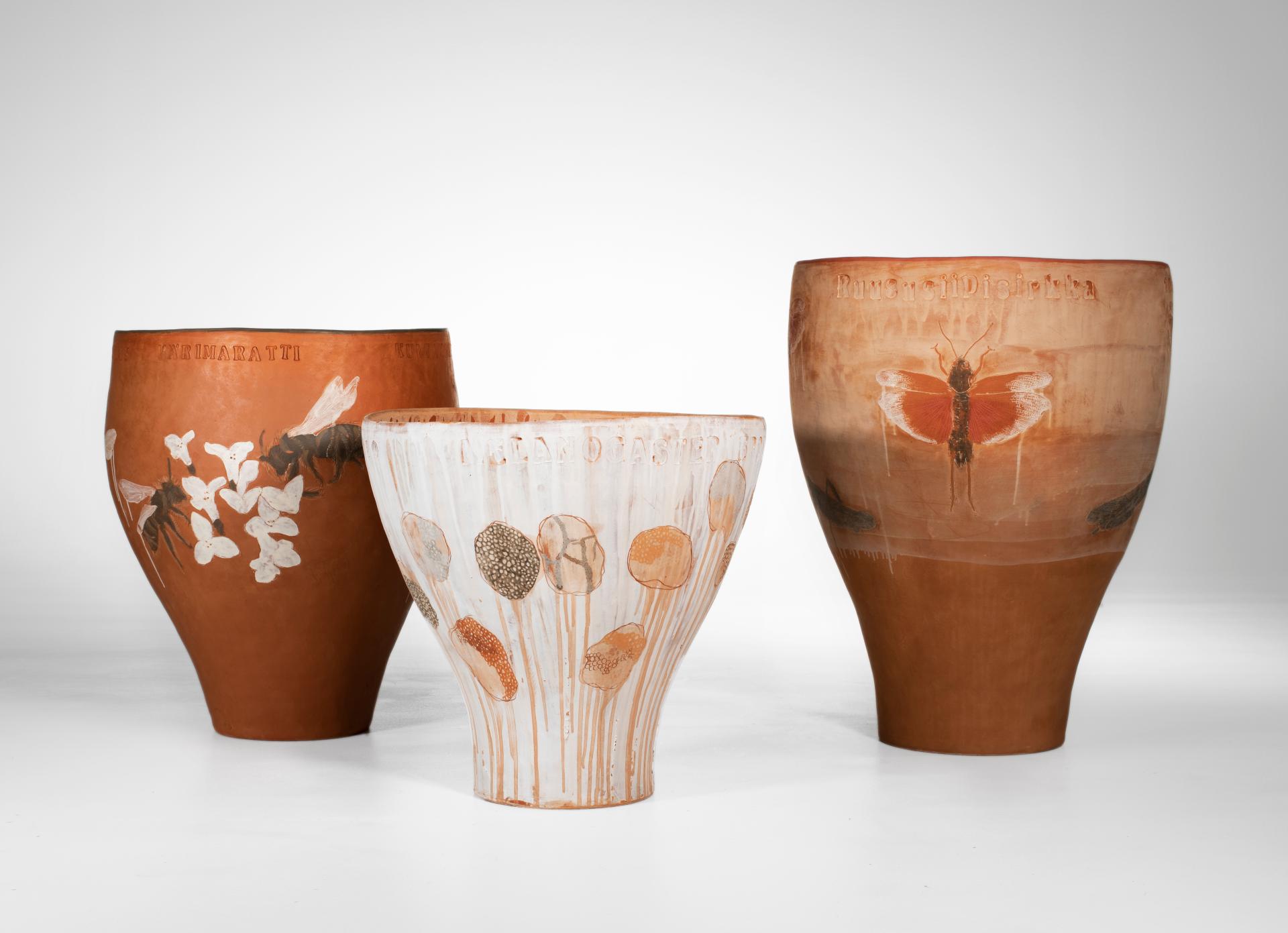Working with Soil
Basic information
Project Title
Full project title
Category
Project Description
Working with Soil group raises questions of the relations of humans and soil by combining art, design, craft and science. They explore local soils and use ceramic art with scientific methods to act with the consequences of consumption with responsibility, hope and care. They invite collaborators and audiences to engage with soil matters. They have shared their results and processes through exhibitions, workshops, expert lectures, academic publications and online platforms since 2019.
Project Region
EU Programme or fund
Description of the project
Summary
Working with Soil group is an academia-driven group of craft practitioners which discusses the relationship of humans and soil through interdisciplinary collaborations. We use the knowledge gained in ceramic art practice to raise attention to human-soil relations' cultural, societal, political, and ecological aspects. We combine craft practice and scientific methods and share the results and processes through exhibitions, expert lectures, academic publications and online platforms lectures as well as via conference presentations, book chapters and journal articles. We invite collaborations such as Finnish Environment Institute SYKE, Geological Survey of Finland, and Museum of Natural History FI, and include the general public, thus sharing and disseminating the knowledge and experiences gained to a broader audience. The insights are implemented in university education as well as in museum pedagogy. The group is led by craft and design researchers and practitioners professor Maarit Mäkelä, leader of EMPIRICA research group and curator Riikka Latva-Somppi, doctoral candidate, from the School of Art Design and Architecture in Aalto University, Finland.
The group was created in 2018 to conduct the craft research project Traces from the Anthropocene: Working with Soil for the Research Pavilion #3 organised by the University of the Arts Helsinki in the context of the Venice Biennale 2019. The exhibitions Soil Matters at Design Museum Helsinki 2020-2021 and works in Ceramics Facing the New -exhibition in Espoo Museum of Modern Art EMMA 2021-2022 continue the concept by combining finished artefacts with an open studio-laboratory, where craft research and creative practice is done. The activities include studying local soil and its organisms through scientific methods and artistic practice and engaging audiences to work with the materials in question and discuss the matters of soil.
Key objectives for sustainability
Working with Soil group's practice combines ceramic knowledge with the understanding that soil is not static but changes over time through humans' impact. The projects target specific sites and local materialities. We address humans' relations to soil, including practices of the design field, as our own practice, placing us in a broader context of discussions concerning environments, soil, and land use. Our approach is based on the idea that humans are not only exploiters of soil, but also members of soil communities together with plants, worms and microbes.
We believe is that sustainability needs to extend from sustaining life for humans to sustaining life for all living organisms. The field of design, including craft, has previously mainly been targeted at creating desires for new consumer products, thus consuming natural resources such as energy, water and earth metals. We understand designers not only as problem solvers and creators of more things but as practitioners with responsibilities to address the consequences of consumption and power to act accordingly. Design has a substantial impact on how the artificial environment is built. It, therefore also has a solid potential to affect how resources are used and how and whose life is sustained. We feel that these are also responsibilities of the design field towards society at large and future generations, including non-human members of soil communities.
Working with Soil aims to engage people in thinking what their relation to soil is and how is their every day connected with the consumption of earth metals and minerals. Through exhibitions, lectures, events and other activities, Working with Soil does not solve sustainability questions but asks them. The public outcomes have provided functional platforms to ask and discuss these matters with the general public in discoursive events, open studios, workshops as well as with experts of the environmental field and the creative area.
Key objectives for aesthetics and quality
The group addresses environmental questions through art, design and craft, connecting scientific knowledge with aesthetic experience and emotion. We aim to reveal connections of places, cultures and times through aesthetic experience. This opens space for moral considerations and may wake ethical obligations. We have organised and participated in exhibitions showing how cultural practices, such as ceramics, are connected to the materiality of soil. Through our work, we have, for example, pointed out that aesthetic preferences are connected to the interest to protect endangered species, environments or ecologies dependent on the well-being of soil. As creatures who experience the world through our senses, we tend to value higher other-than-human species that are large, fast, colourful, cute and visible. This may affect the need to care for and protect small and modest-looking species. We have made such critically endangered plants and insects visible in our project by painting them on large ceramic pots and exhibiting rare species specimen alongside the artefacts. The exhibition displays act as a material narrative that invites the public to join a discussion on issues related to species extinction with biodiversity experts and creative practitioners.
The relation of environmental aesthetics and craft practice in the context of the Venice Lagoon was discussed in: Latva-Somppi, Riikka & Mäkelä, Maarit (2020) Exploring Ecological and Material Sensitivity through Craft Practice in the Context of the Venice Lagoon. Aisthesis 13(1), 31-46. https://doi.org/10.13128/Aisthesis-10916
Key objectives for inclusion
Our idea of responsible practice extends from including users, communities and other humans to the inclusion of all living organisms. This is based on philosopher Aldo Leopold's concept of land ethic (1949), which understands humans as citizens of land communities. We aim to highlight the responsibilities towards the other members of the soil communities and the communities themselves through our practices. These are responsibilities we have as humans and as designers and makers.
Results in relation to category
Listed below is the exhibitions and articles through which the group's consistent practice and insights concerning soils and soil care are brought to public discussion. These are examples of results and ways to disseminate academic research of the creative field. All publications below are either curated or peer-evaluated. Thus independent evaluation (last question).
exhibitions:
2019 Research pavilion #3, Venice, Italy
2019 Designs for a Cooler Planet HDW, Beta Gallery, Espoo
2019 RP#3 Infolab, Exhibition Laboratory, Helsinki
2020 Art of Research: Authorship and Responsibility Exhibition, Aalto University, Espoo
2020-2021 Soil Matters, Design Museum Helsinki
2021-2022 Ceramics Facing the New, Espoo Museum of Modern Art EMMA
articles:
Latva-Somppi, R., Mäkelä, M. & Gündeşlioğlu, Ö. (2020). Traces from the Anthropocene: Working with Soil. RUUKKU - Studies in Artistic Research, 14. https://doi.org/10.22501/ruu.697190
Latva-Somppi, R. & Mäkelä, M. (2020) Exploring Ecological and Material Sensitivity through Craft Practice in the Context of the Venice Lagoon. Aisthesis 13(1), 31-46. https://doi.org/10.13128/Aisthesis-10916
Latva-Somppi, R., Mäkelä, M., Lindström, K., & Ståhl, Å. (2021). Entangled Materialities: Caring for soil communities at glass industry sites. FormAkademisk - forskningstidsskrift for design og designdidaktikk, 14(2). https://doi.org/10.7577/formakademisk.4180
Vega, L., Aktas, B. M., Falin, P., Latva-Somppi, R. & Valle-Noronha, J. (2021) Shared Authorship in Research through Art, Design, and Craft. Research in Arts and Education.
Latva-Somppi, R. (2020). Soil Matters: Merging field, laboratory and gallery to explore the materiality of soil. In Camilla Groth & Biljana Fredriksen (eds.) Crafting –with the Environments. Springer (In press)
Mäkelä, M. (2022). Crafting in dialogue with the material environment. In Camilla Groth & Biljana Fredriksen (eds.) Crafting –with the Environments. Springer. (In press)
How Citizens benefit
We study the soil at specific sites by following a three-step strategy: First, we go to the places in question and explore them through the skills and knowledge acquired through our creative practice; second, we invite others, such as locals, authorities, scientists, colleagues, students and exhibition visitors to engage in dialogue; third, we make the processes, reflections and outcomes visible in the forms of exhibitions, events, discussions and lectures.
By acting this way, we use our professional expertise in engaging with matters of concern and include multiple stakeholders and individuals with the practices of care. For example, in Murano and Nuutajärvi we studied how the glass industry had polluted the soil. We listened to the stories told by the residents and invited them to share their experiences. Then, we went to the sites and analysed the soil to find out how it has changed as a consequence of the design industry. The analysed soil was used as ceramic materials, or it was studied further to find out if certain plants could remediate it. These processes were shared with the public to address environmental concerns but also as a practice of hope and care. In Venice (2019) the audience, including the local citizens and biennale visitors, were invited to work with clay alongside the ceramic practitioners, join a discoursive event, and discuss the ecological matters while viewing the exhibition. In Helsinki (2020) the creative work and research was done publicly in the exhibition space, workshops were arranged, and, for example, public soil scanning events were organized. The public was also invited to go to places that matter to them, and send a small soil sample which was then scanned for its heavy metals. This was an invitation to physically engage with the soil at a specific site that evoked interest, memories or a need to care.
Innovative character
For thousands of years, pottery-makers have collected clay and other soil materials such as earth metals and minerals to make ceramic objects. Ceramic knowledge builds on disciplinary tradition, tacit and embodied knowledge, ceramic material chemistry and aesthetics. The Working with Soil group's practice combines ceramic expertise with the understanding that we are in constant becoming with soil. Our actions change the soil. Through the consumption of natural materials and food, soil also impacts us. Ceramics are used to communicate specific knowledge and as a metaphor for a cultural product that is deeply connected to the soil.

